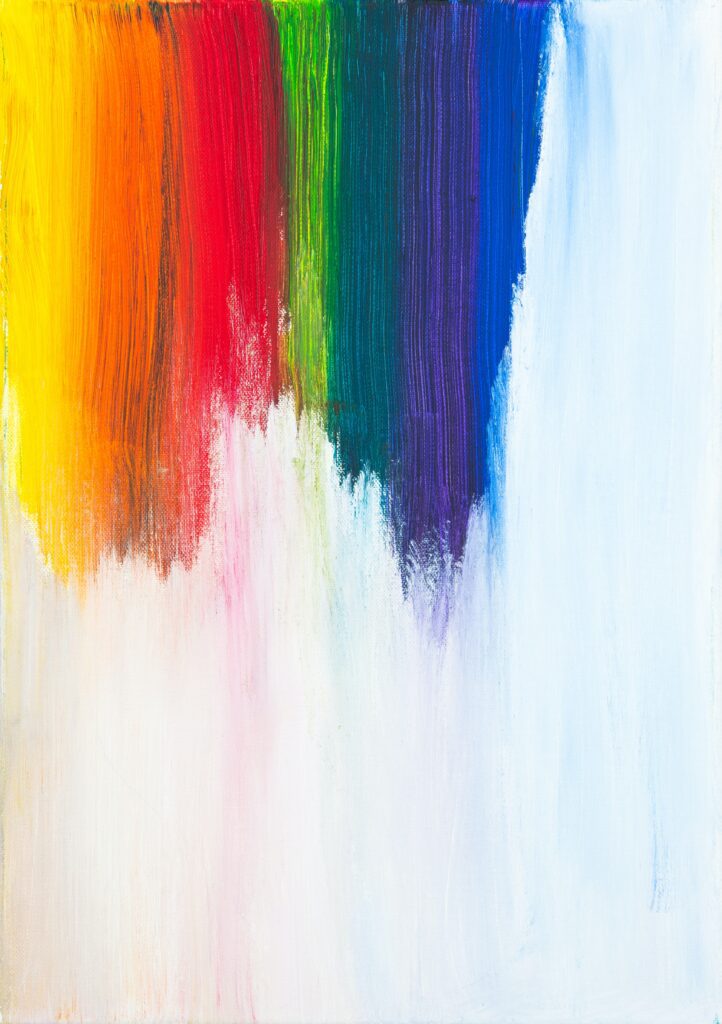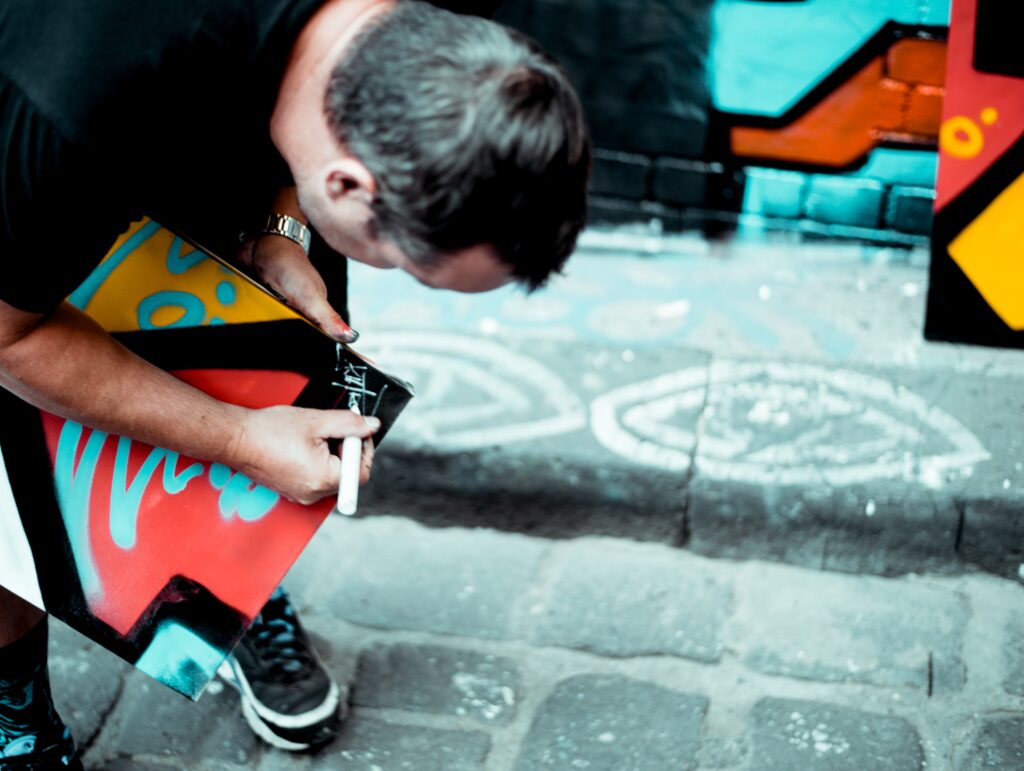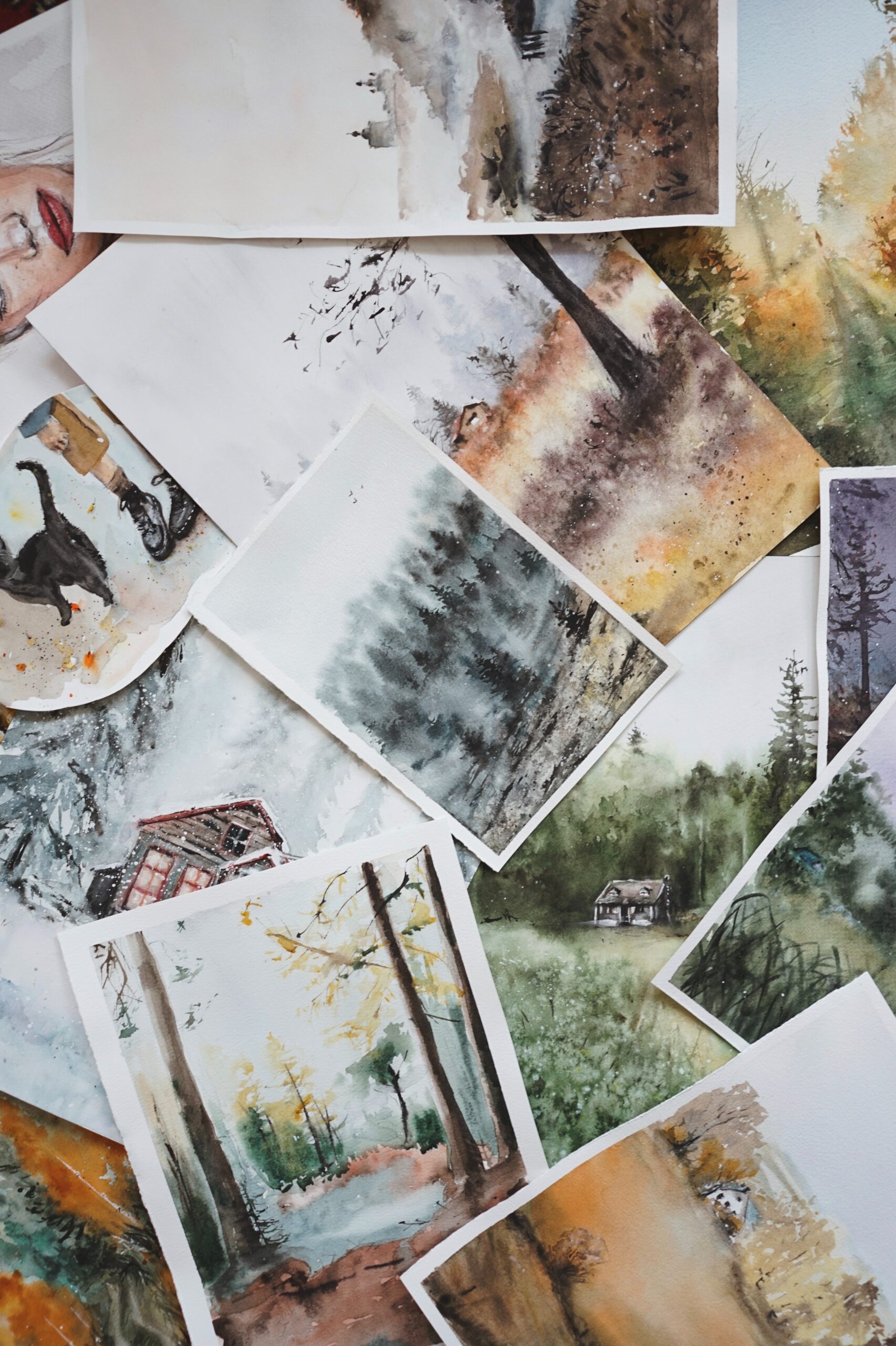A print is a replica of an original watercolor painting. We print it on a separate paper or canvas. It may have several copies. We make an original watercolor painting from watercolor on rough and textured surface watercolor paper. When we look at the painting from another angle, the uneven surface gets visible.
How can I tell a print from an original watercolor?
Watercolor paintings are hard to identify as compared to oil paintings, acrylics, and gouache. So, use the magnifying glass to see the texture of the paper and paint on the painting. The original watercolor painting has a rough texture. Rotate the painting and see from different angles if the paper has a rough surface or not. However, prints have dots on them. If you see it keenly through the magnifying glass, then you will see patterns throughout the print. The surface has multiple colored dot penetrations, no matter how fine the resolution: only a close-up is needed.
1. See the texture of the paint:

Feel the texture of paint on the canvas. Most often, the original watercolor paintings have several overlapping brushstrokes. Some original paintings have individual brushstrokes, and the rest have brushstrokes blended with translucent pigments to create variant colors and tones. That’s why you should be vigilant with your checks and do not confuse the original with the fake one.
If you see the overlapping of colors, then it is the original watercolor painting. But sometimes, if you will see thin layers of different blended colors with smooth surfaces, then it is an original painting. Most often, in that case, the paper grain is visible, and some of the colors will mix with the white paper that produces a transparent mix match effect.
2. How to feel the print:
Prints are made of many dots, but some prints like Giclee prints are keenly reproduced. They contain spots of paint that create the texture of the print. They are hard to determine, so you have to be more careful while observing the authenticity.
3. See the texture of the Canvas:
Watercolor paper is made of cotton that tends to act as an absorbent. It allows the watercolor to go down deep and spread easily. If you see the texture of the canvas like this, then it might be a watercolor painting because watercolors sink into the canvas paper.
4. Check the boundary of the painting:
When you see arbitrary edges with a clean, smooth finish and straight sides, it must be a print of some kind because prints have clear edges. Also, the original watercolor paintings have uneven edges all over. When the artist paints directly on the paper with the help of watercolor on the surface, the paint flows all over the edges.
The flat, clean, and gorgeous finish edges are of print and uneven edges of watercolor paintings. Most of the time, the edges are not keenly painted and still look white.
5. Check the image under a good light:
It is quite easy to understand whether the painting is real or print if you examine it in a good light. The watercolor painting will be on a cotton canvas and have a flat finish. If you turn it under the light, it could be visible that it might be the outcome of several light brush strokes.
On the other side, the print will have a glossy look and have a smooth finish. It feels that someone has sprayed a thin layer of gloss on it. It will be printed on poster-grade paper that is different from watercolor paper.
6. Examine the signature of the artist:

Whenever you want to buy an artwork, the first thing that you will have to examine is the signature of the artist. It is always present on the painting, but some limited edition prints often have the signature of the artist. So, to differentiate, you will act mature and consider the following tip.
TIP: The difference between the two is that the original painting has the hand-rendered signature within the margins on the artwork, including an edition number views in close up. The limited-edition print has a pencil signature under the work along with the edition number.
7. The presentation of painting and print:
The main difference between the watercolor painting and print or poster is that the watercolor painting is always covered in a glass frame. It is framed to reverse the fading problems, which are quite common in watercolor paintings, whereas the print is not framed in glass cover for protection. In case if it is framed and you see it behind the glass, then you will be able to differentiate because both have a different paper feel. So, you can tell confidently which one is a watercolor painting and which one is a print or poster.
8. Ask the professional for help:
After examining the image on your own, you will have to go to the professional artist for help and ask him to see whether the painting is original or not. It works in your favor, and he will assure you with 100 percent genuine feedback.
9. Authenticity Certificate:
You will have to make sure that a certificate of authenticity is awarded at the time of purchase. It is a certificate or a signed document that proves the originality of the artwork, and it also contains information about the painting. If the artwork is given without an authenticity certificate, it means that it may be fake. So, you should avoid purchasing that sort of paintings.
10. Suggestion: Do Google:
Google is your best friend. It will tell you everything about the artwork or about anything that you have been in search of. So, just google the details of the painting you will consider buying. It will tell you about the genuine painting and who has it right now. So, after collecting the information, you would have the chance to confirm whether or not you will have the original piece of artwork from the current owner or will have the reproduction. Googling is cheap, but it will save your money from wasting on replicas and prints.
Beatrix Ainsley (Bea to her friends) is an abstract artist who was heavily inspired in her twenties by the abstract expressionist movement of the 1940s. Since then Bea has acquired three degrees in Science, Education and most importantly Fine Art. Her art works showcase exploring emotion and introspection of self. To achieve this – the use of bold, sweeping, intricate layers of color, and spontaneity of form is enhanced by reflecting on decades of life experiences. Bea has amassed a vast knowledge of art in all its forms, and hopes to pass it on with her contributions here.

